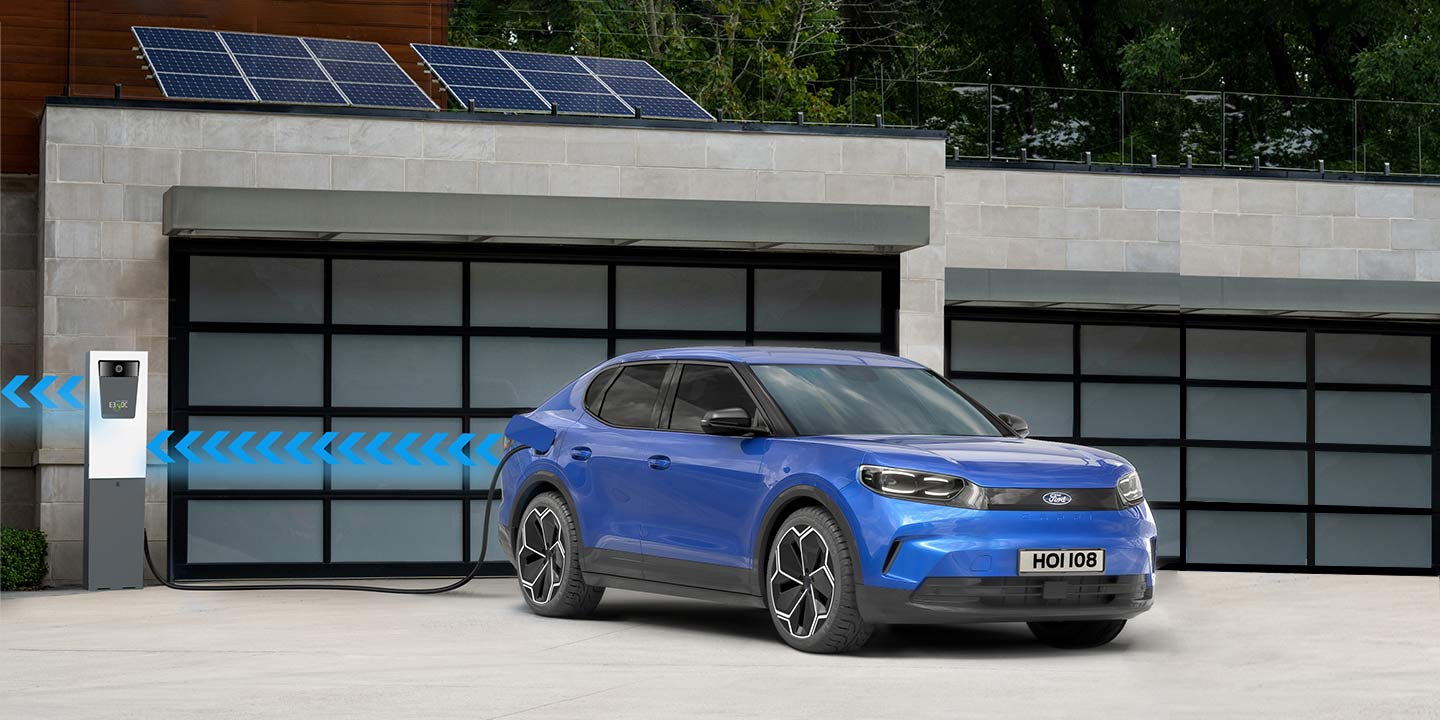E3/DC and Ford Motor Company cooperate on bidirectional charging
29. January 2025
• The Hager Group brand E3/DC partners with Ford Motor Company on bidirectional charging solutions in Germany, Austria and Switzerland.
• Ford electric models can be used as a storage extension for buildings with an E3/DC energy storage station.
• Charging in both directions: The building's own photovoltaic system can store surplus energy in the vehicle, and when required, the vehicle in turn supplies this energy back to the battery in the energy storage station.
Anyone who uses one of Ford's new battery-electric models, operates a photovoltaic system and has a home power station installed by E3/DC will be able to use their vehicle as a storage extension for their home in future. Both the Ford Explorer and the new Capri are approved for bidirectional DC charging and thus provide crucial support for the energy transition.
Bidirectional charging means that the domestic photovoltaic system first charges the batteries of the Explorer and Capri with solar energy. In return, the electric cars provide energy for use in the home when required. This reduces the strain on the power grid and your wallet by increasing the utilisation of self-generated solar energy, which would otherwise be fed into the grid.
The key to perfect solar self-sufficiency
Thanks to bidirectional charging, electric vehicles also have an important function when stationary: they serve as additional storage for renewable energy in residential and commercial buildings. By doing so, they help to flexibly adapt on-site power generation to current demand. The large capacity of the vehicle battery supplements the stationary storage system and thus significantly increases energy security in the event of grid failures.
‘We have deliberately equipped the Ford Explorer and our new Capri with the option of bidirectional charging because we consider this technology to be an important pillar of future-proof energy supply,’ explains Oliver Adrian, Head of European Charging & Energy Strategy and Go-to Market, Ford Model e.
"This technology allows even more energy from renewable sources to be utilised. The large batteries in our modern electric models are ideal as buffer storage."
Dr Andreas Piepenbrink, Business Unit Vice President Energy Management Development and founder of the E3/DC brand, emphasises the upcoming start of the collaboration with Ford: ‘We see DC-based bidirectional charging as the key to a decentralised energy transition that works around the clock and throughout the year.’
For the future, E3/DC is also focussing on forecast-based charging and the active use of dynamic electricity tariffs. In this way, both the stationary storage system and the larger vehicle battery can be charged during the darker months of the year when solar yield is low but wind power is high. The stored energy can then be utilised in the home during periods of high electricity costs. This promises a significant reduction in these costs and contributes to the stability of the electricity grids.
For more information, visit: https://www.e3dc.com/proxy/bidirektionales-laden-mit-e3-dc-ford/

